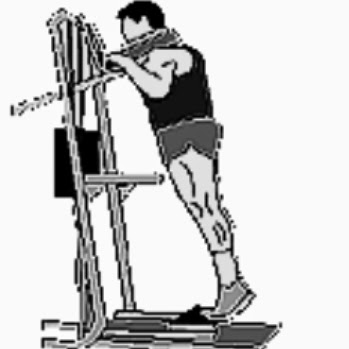"DEAD LIFT (Variant I Add up)"
Hello friends, today we have a new publication that is
related to one of the previous publications, are speaking about the dead
weight, but there exists another variant that also is very effective and the
work it emphasizes other muscular groups, we are speaking about the dead weight
but the variant of I add up.
In the dead conventional weight one is employed with a
range of major movement at the hip, and in the dead weight of the variant of I
add up one is employed with a major range of movement at the knees.
The musculature involved in the technical execution is
the following one:
-
Femoral
Quadriceps.
-
Vast
average Quadriceps.
-
Vast
lateral Quadriceps.
-
Average
Adductor.
-
Minor
Adductor.
-
Major
Adductor.
-
Major
Gluteus.
The technical correct execution is the following one:
Initial Position
Of foot, with the feet more separated that in the dead
conventional weight (a bit more of the width of the shoulders), we hold a bar
ahead of the thighs and the hands placed to the width of the shoulders, also we
can use you dumbbell.
Downward movement
We lower the bar up to coming a bit below the knees,
it is important not to bend the back, the back always must be straight, and the
knees flexed.
Upsward movement
From the previous position, we raise the trunk and
return to the initial position without stretching completely the knees.
Advices:
-
Not
to bend the back.
-
Not
to stretch completely the knees.
-
Not
to come up to the soil.
-
To
realize the exercise to a controlled speed.
Bibliography:
Recovered of: http://www.vitonica.com/deportes/gimnasio/peso-muerto
Recovered of: http://www.foroadelgazar.com/f114/peso-muerto-y-acondicionamiento-neuromuscular-53587/

.jpg)












